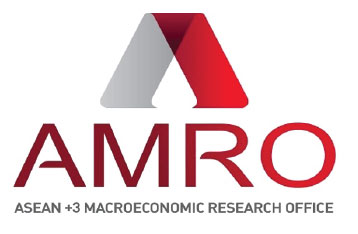
SINGAPORE, November 6, 2025 – The Lao PDR economy continues to post moderate growth, driven by robust performance in the electricity and services sectors. Inflation has eased to single-digit levels, and the kip has stabilized following recent policy reforms. Nonetheless, the outlook remains clouded by concerns over external debt sustainability amid rising global uncertainties. Sustained macroeconomic stabilization efforts and accelerated structural reforms will be critical to safeguarding stability and strengthening growth prospects.
These conclusions are highlighted in the 2025 Annual Consultation Report on Lao PDR, released today by the ASEAN+3 Macroeconomic Research Office (AMRO). The report is based on AMRO’s Annual Consultation Visit to Lao PDR in July 2025 and incorporates data and information available up to September 10, 2025.
Economic developments and outlook
Monetary tightening, fiscal consolidation, and foreign exchange (FX) measures have helped bring inflation down to single digits and stabilized the kip. The launch of the Lao Foreign Exchange has reduced reliance on the parallel market and contributed to exchange rate unification.
Higher exports and tourist receipts—together with continued suspension of debt repayment to a major external creditor and mandatory FX repatriation and conversion requirements—have strengthened the balance of payments, raising official reserves to USD 2.6 billion in June 2025. On the fiscal side, stronger revenue collection and contained expenditure have supported surpluses and lowered the debt-to-GDP ratio.
Risks, vulnerabilities and challenges
Despite recent improvements, risks of currency depreciation and renewed inflation persist amid the elevated external debt service burden. To meet financing needs, the government has relied on debt suspension and short-term foreign currency (FCY) bond issuances to domestic banks. However, continued dependence on short-term borrowings and the eventual expiration of debt suspension mean that repayment obligations will remain high. This has amplified refinancing risks for the government and increased banks’ exposure to the public sector.
Fiscal risks stem from contingent liabilities in state-owned enterprises (SOEs), particularly in the electricity sector. Until significant reforms—including a phased five-year increase in tariffs toward cost recovery—are completed, electricity SOEs are likely to continue incurring losses.
Externally, global trade tensions continue to weigh on Lao PDR’s growth outlook. While the immediate impact of recent US tariffs is expected to be limited, the risks from escalating trade frictions remain significant. A sharper slowdown in China—Lao PDR’s largest trading partner and investor—together with weaker regional growth, could further dampen exports and growth prospects.
While moderate growth is expected to continue, competitiveness remains constrained by limited domestic value addition and a narrow export base. Climate change presents an additional challenge, given Lao PDR’s limited capacity for mitigation and adaptation.
Policy recommendations
A well-calibrated policy mix is essential to safeguard macroeconomic stability. On the fiscal front, a comprehensive debt restructuring plan is critical to establish a more manageable FCY debt service profile and ease pressure on the FX market. The Bank of Lao PDR should maintain a tight monetary policy stance, given fragile inflationary expectations and the need to safeguard exchange rate stability, especially amid electricity tariff reforms.
FX management policies should continue to be implemented effectively to support reserve accumulation and investor confidence. Allowing greater exchange rate flexibility will help align bank rates with market conditions and sustain progress toward exchange rate unification. Efforts to promote local currency usage should be carefully designed, clearly communicated, and consistently implemented to ensure credibility and effectiveness.
Banking sector vulnerabilities require urgent attention, with priority on improving asset quality, bolstering capital buffers, and strengthening risk management and supervision.
Fiscal consolidation must continue to achieve a sustainable debt trajectory over the medium term without undermining growth prospects. The government should enhance revenue mobilization through broadening the tax base and strengthening tax administration, while improving spending efficiency. Strict adherence to borrowing and guarantee ceilings is essential, alongside efforts to regain access to international bond markets on improved terms. In the long run, developing the domestic bond market will be crucial for sustainable financing.
The recent electricity tariff reform is a crucial step toward strengthening the financial position of SOEs, the government, and domestic banks. At the same time, expanding targeted support to vulnerable households would help cushion social impacts. Accelerating reform in the electricity sector is vital to reducing debt vulnerabilities and contingent liability risks.
To enhance Lao PDR’s growth prospects, policy priorities should focus on raising productivity, diversifying the economic and export base, and channeling public resources toward infrastructure and connectivity, as well as healthcare, education, and skills development.
About AMRO
The ASEAN+3 Macroeconomic Research Office (AMRO) is an international organization established to contribute toward securing macroeconomic and financial stability of the ASEAN+3 region, comprising members of the Association of Southeast Asian Nations (ASEAN) and China; Hong Kong, China; Japan; and Korea. AMRO’s mandate is to conduct macroeconomic surveillance, support regional financial arrangements, and provide technical assistance to the members. In addition, AMRO also serves as a regional knowledge hub and provides support to ASEAN+3 financial cooperation.
About AMRO’s Annual Consultation Report
The Annual Consultation Report was prepared in fulfillment of AMRO’s mandate. AMRO is committed to monitoring, analyzing and reporting to its members on their macroeconomic status and financial soundness. It also helps identify relevant risks and vulnerabilities, and assists members, if requested, in the timely formulation of policy recommendations to mitigate such risks.
